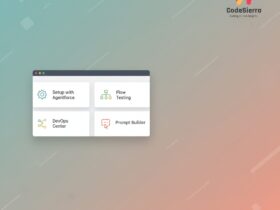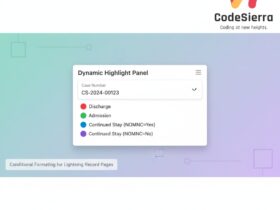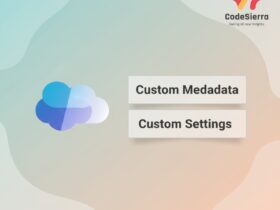A practical, step-by-step guide to publish Salesforce Agentforce agents on Experience Cloud so customers can self-serve answers via a conversational interface.
In fast-moving customer service environments, publishing an Agentforce Agent on Experience Cloud lets you deliver 24×7, accurate, and concise answers to customers without heavy backend development. This guide walks through the configuration, permissions, messaging, routing, and site setup needed to make your Agent live on a public Experience Cloud site.
Why publish Agentforce Agent on Experience Cloud?
Publishing an Agentforce Agent is one of the quickest ways to reduce repetitive workload for support teams and improve customer satisfaction by enabling self-service. Typical benefits include:
- Reduced load on customer service teams
- Faster response times and consistent answers
- 24×7 availability for common, information-based queries
- Minimal development overhead — use Agentforce foundation and configure
Typical business use case
Airlines, utilities, telcos and many service-driven businesses have frequent, repeatable queries (policy, entitlements, cancellations, bookings). For example:
- What is the cancellation policy for premium tickets?
- How do I change my seat?
- Is a meal included in my fare?
When you publish an Agent on Experience Cloud, customers can ask these questions directly on your site through a chat widget — no wait times, no manual lookups.
Quick win checklist
If you have structured FAQs or policy documents, you can deploy an Agentforce Agent quickly:
- Upload FAQs or policies into the Agentforce Data Library.
- Link the Data Library to your Agent.
- Publish the Agent on your Experience Cloud site.
Step-by-step tasks (overview)
The end-to-end process includes these main steps. Each step has configuration nuances — follow them carefully:
- Create a new Service Agent in Agentforce.
- Verify and assign the required Permission Set to the Agent users.
- Enable Messaging in the org and configure Omni-Channel routing.
- Enable Routing Configuration, create Queue, Presence Status, and Presence Permission Set.
- Create and configure Messaging Channel and Embedded Service Deployment.
- Build an Omni-Channel routing Flow and attach to the Messaging Channel.
- Enable Digital Experiences and create an Experience Cloud site.
- Add trusted URL(s) and configure CORS (Cross-Origin Resource Sharing).
- Test the Agent on the Experience Cloud site and iterate on prompts & data sources.
Practical tips & best practices
- Start with a small, high-value dataset (top 10–20 FAQs) and expand over time.
- Use clear, structured documents when adding content to the Data Library for better retrieval quality.
- Test in a sandbox/DEV org and validate user permissions and routing before publishing to production.
- Monitor conversation logs and feedback to refine prompt templates and agent responses.
- Use conversational fallback and escalation actions (transfer to human agent) for queries the AI can’t resolve.
Where to see it in action
To see an example deployment, try the public demo site (chat icon at bottom-right):
https://asagarwal-agentforce-dev-ed.develop.my.site.com/siaa/
Resources & further reading
Conclusion
Publishing an Agentforce Agent on Experience Cloud is a strategic, achievable step to deliver AI-powered self-service for customers while reducing agent workload. With well-structured content and correct routing/configuration, you can go live in around 60–70 minutes for basic deployments.
Why this matters: For Salesforce admins, developers and business users, Agentforce on Experience Cloud provides a fast route to measurable service improvements — fewer repetitive cases, faster answers for customers, and a path to scale conversational AI across digital touchpoints.










Leave a Reply